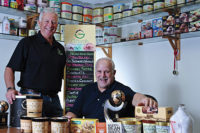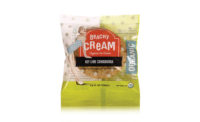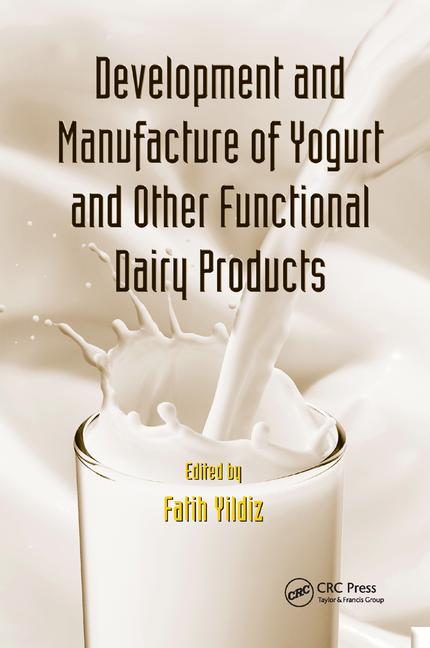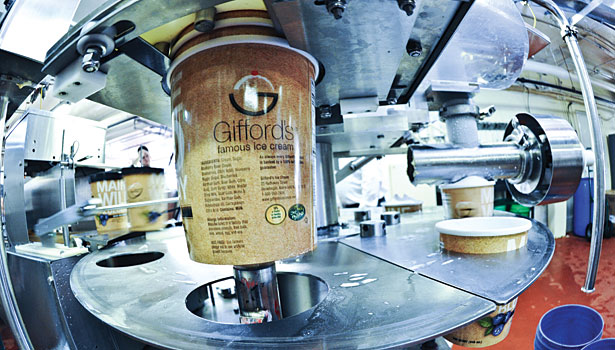Gifford's makes ice cream with family recipes, vintage equipment
Gifford’s makes the world’s best chocolate ice cream using old-fashioned recipes and equipment at its little plant in Skowhegan.


Gifford’s ice cream makers include (back row, from left): Les Perry, Todd Parker, Roger Gifford, Joe Ramsdell, Ryan Porte, Jason Bolduc, Ryan Thurlow and Carl Smith. Bottom row: Paul Armstrong, Lindsay Gifford-Skilling, J.C. Gifford, Joel Violette and Scott Atkinson. Below: Les Perry inspects the flavor vats.






Gifford’s has installed new ripple equipment and a fruit feeder, as well as two new screw compressors. The screw ammonia compressors and computerized controls with new variable frequency drives for speed control of fans and pumps provide electricity savings. A new clean-in-place system assures accurate cleaning and sanitizing. Plus, it saves water. Other improvements that reduce energy consumption include energy-efficient lighting and a new control system for the boiler.
Good ice cream starts with good ingredients. Gifford’s uses r-BST-free milk from Oakhurst Dairy which sources it all from Maine dairy farmers. Gifford’s accepts milk deliveries two to three times weekly. In the small, on-site lab, technicians perform a variety of analyses, including a stress coliform test, the Gerber fat test (to determine the percentage of fat in the product) and homogenizer efficiency. The facility is under the jurisdiction of the Maine Department of Agriculture, which inspects the plant and performs routine checks of the high-temperature/short-time pasteurization system. The U.S. Food and Drug Administration also has jurisdiction over the manufacturing process.
Before pasteurizing and homogenizing, the milk flows to the 500-gallon mix tanks, where liquid sugar, powders and stabilizers are added. New flow meters for batching ensure accuracy and contribute towards consistency of product. After blending, the ice cream mix is aged for 24 hours to improve the flavor, texture and body. New equipment includes a 7,000-gallon mix storage tank and a 1,200-gallon-per-hour homogenizer.
Gifford’s makes about 90% of its ripples and base, allowing it to control costs and quality. Bases include blueberry and ripples include fudge and fruit bases. The bases are cooked in two steam kettles. Gifford’s also uses natural vanilla flavorings for its branded ice cream and artificial vanilla in recipes for certain co-packed products.
The aged ice cream mix is pumped to four 400-gallon flavor tanks and then pumped to the three continuous freezers. The freezers have two barrels, which create a smooth texture, explains plant manager Joel Violette. The mix is pumped to the filling line. One filler handles 2 ½-gallon and 3-gallon bulk cans for scoop shops and foodservice customers. The second line fills quarts, half-gallons, and 56-ounce square-round or brick containers. Co-packed ice cream is packaged in bricks.
The packages are dated on the bottom as they come off the filler, then are assembled in shrink-wrapped bundles of six and conveyed to the freezer.
Every five minutes, Violette pulls a carton from the packaging line to weigh it. If necessary, he fine-tunes the hold-back valve on the freezer. He listens to the motors, too, and makes adjustments based on what he hears. On new machines, computers regulate filling. But the hands-on processing contributes to Gifford’s story of hand-crafted ice cream made the old-fashioned way.
Quality control includes daily product sampling. At the start of every run the production manager will take a container off the line and dig into it to check all ingredients and taste. Every day Giffords pulls samples off the line and lets them harden. Once a week the quality control manager and one other employee (a different employee each time) cut into the product to check ingredients, ripples, color, taste and other features.
Looking for a reprint of this article?
From high-res PDFs to custom plaques, order your copy today!














